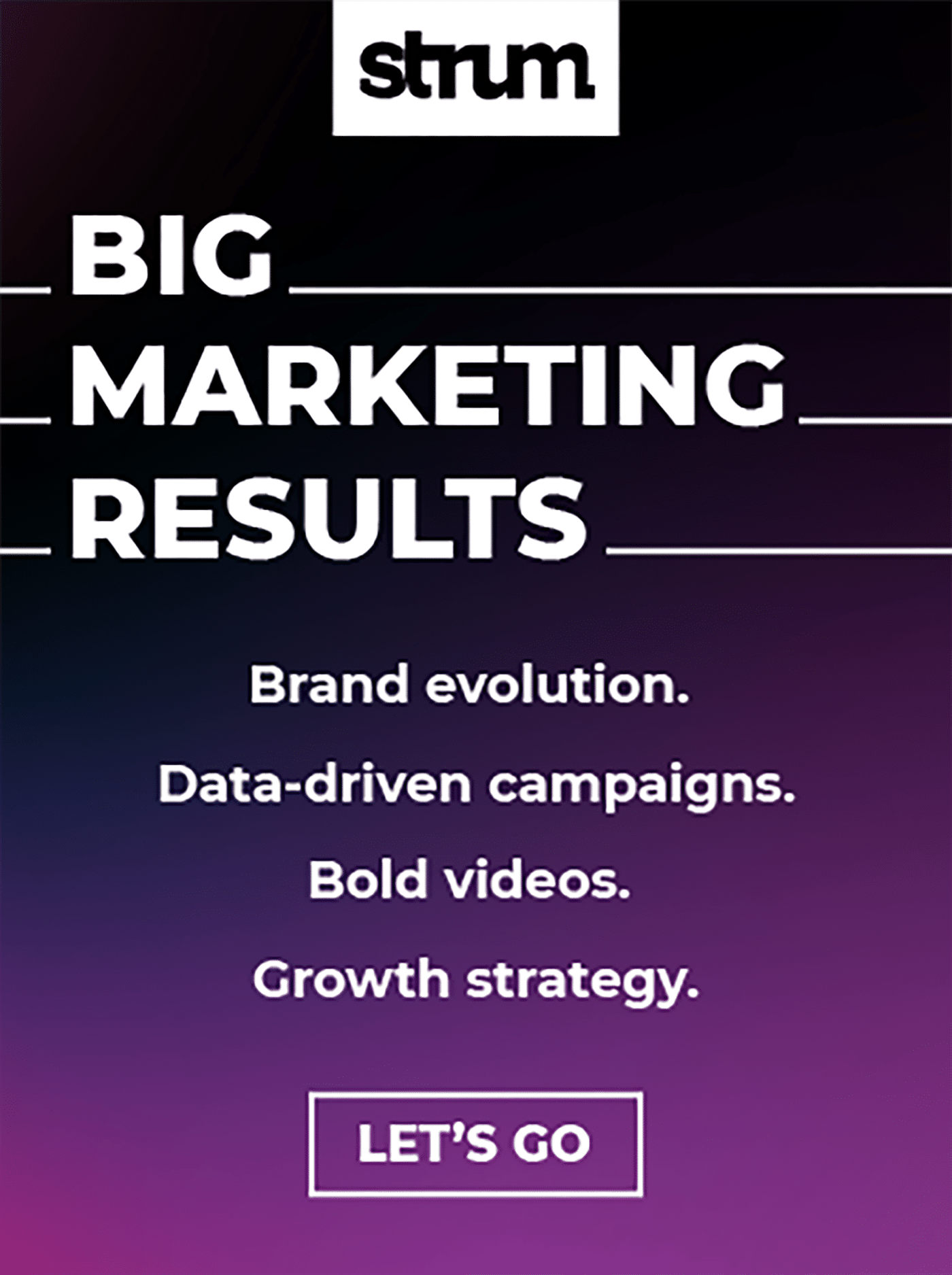In this episode of the Banking Transformed podcast, The Financial Brand’s Jim Marous sits down with Devesh Khare, chief product officer at MeridianLink, a leading provider of cloud-based software solutions for financial institutions. Fresh off the MeridianLink LIVE event, Khare explores the biggest challenges and opportunities facing financial institutions in today’s rapidly evolving landscape. He shares his firsthand insights on the state of digital transformation in banking and the key strategies institutions must embrace to stay ahead of the curve.
As Marous and Khare dive deep into the complexities of modernizing legacy systems, creating seamless customer experiences and leveraging data and AI, a clear picture emerges: Success in the digital age requires a fundamental shift in mindset and a willingness to break free from the status quo.

Data Insights Deliver: Bank Reaches 113% ROMI with Segmentation
Uncover the techniques behind this bank's impressive ROI boost through data-driven marketing.
Read More about Data Insights Deliver: Bank Reaches 113% ROMI with Segmentation

Industry Cloud for Banking from PwC
PwC’s Industry Cloud for Banking applies our deep industry knowledge to your specific business needs.
Q: What were the most surprising or eye-opening themes that emerged from your conversations with financial institutions at the event?
Devesh Khare: One of the most striking themes that emerged from our conversations was the growing recognition that digital transformation is not a one-time event but an ongoing journey. Financial institutions are realizing that they need to continuously evolve and adapt to stay ahead of the curve. They’re looking for ways to progressively enhance their digital capabilities and create more seamless, personalized customer experiences.
Another eye-opening insight was the increasing focus on the end-to-end customer journey. Institutions are moving beyond just thinking about individual touchpoints or transactions and instead are considering how they can support customers’ financial needs and goals throughout their entire lifecycle. This holistic approach drives a shift towards more data-driven, contextual experiences that add value at every stage.
Q: How are consumer expectations shifting in ways many financial institutions may not fully grasp?
Khare: I think one of the biggest shifts we’re seeing is the expectation for immediacy and ease. Consumers today are used to the instant gratification and seamless experiences they get from digital leaders like Amazon and Netflix. They expect the same level of speed, convenience and personalization from their financial institutions.
This means that institutions need to rethink their processes and leverage technology to enable things like instant account opening, real-time decisions and proactive recommendations. They also need to ensure that these experiences are consistent and connected across all channels, whether online, mobile, or in-branch.
Another shift that institutions may be underestimating is the growing importance of financial wellness and advice. Consumers are looking for more than just transactional services; they want their institutions to be trusted advisors who can help them achieve their financial goals. This requires a more proactive, data-driven approach to engagement that goes beyond traditional banking products and services. Finally, remember that digital transformation is ultimately about people, not just technology. Keep your customers and employees at the center of everything you do and focus on creating experiences that make their lives easier and better.
Overcoming Outdated Systems and Mindsets
Q: What are some of the most common legacy systems and mindsets that hold financial institutions back from fully embracing digital transformation?
Khare: One of the biggest challenges we see is the reliance on outdated, siloed systems that don’t easily integrate with new technologies. Many institutions are still running on core banking platforms designed decades ago, making implementing more modern, customer-centric solutions difficult.
Another common mindset barrier is the fear of change and the tendency to cling to traditional ways of doing things. Some institutions may hesitate to fully embrace digital channels or automate certain processes because they worry about losing the personal touch or creating new risks.
There’s also often a lack of alignment between different departments or business lines, leading to a fragmented, inconsistent customer experience. Breaking down these silos and creating a more collaborative, agile culture is essential for successful digital transformation.
Q: Can you share an example of a financial institution that successfully overcame these challenges and its impact on their business?
Khare: One great example is a regional bank we worked with that had a very traditional, branch-centric model. They recognized that they needed to modernize their technology and processes to stay competitive but worried about alienating their loyal customer base.
Instead of trying to change everything overnight, they took a phased approach. They started by implementing a new digital account opening solution that allowed customers to open accounts easily online or on mobile.
They then gradually introduced more self-service features and personalized recommendations while still maintaining a strong human touch through their branch network.
The results were impressive. They saw a significant increase in new account openings and customer engagement while also reducing costs and improving efficiency. By taking a strategic, stepwise approach to transformation, they overcame their legacy challenges and created a more seamless, customer-centric experience.
Charting the Digital Roadmap
Q: When a financial institution approaches MeridianLink for guidance on their digital transformation journey, what are the key questions you ask to help them prioritize their efforts?
Khare: The first thing we always ask is: “What are your business goals and customer needs?” It’s essential to start clearly understanding what you’re trying to achieve and who you’re trying to serve. This helps ensure that your digital initiatives are aligned with your overall strategy and not just technology for technology’s sake.
We also ask about their current capabilities and pain points. Where are they experiencing the most friction or inefficiency? What are the biggest gaps in their customer experience? This helps us identify the areas where they can make the most impact and prioritize their efforts accordingly.
Another key question is about their appetite for change and innovation.
How quickly do they want to move and how much risk are they willing to take on? This helps us tailor our recommendations and create a roadmap that balances quick wins with longer-term strategic initiatives.
“The key is to always start with the customer. Instead of getting caught up in the latest buzzwords or shiny new technologies, institutions must stay focused on what will make a difference for their customers and their business.”
— Devesh Khare, MeridianLink
Q: How do you help institutions balance the need for quick wins with the longer-term vision for digital maturity?
Khare: It’s all about creating a phased roadmap that delivers value at every stage. We often recommend starting with a few high-impact initiatives that can generate quick wins and build momentum. This could be something like implementing a new digital onboarding solution or automating a key process that’s currently manual and time-consuming.
At the same time, we help institutions develop a longer-term vision for their digital maturity and create a plan to get there. This might involve more comprehensive changes like modernizing their core banking platform, implementing advanced analytics, or redesigning their customer journeys from end to end.
The key is to break these larger initiatives down into manageable phases and continually measure progress along the way. This allows institutions to make steady, incremental improvements while still keeping their eye on the bigger picture.
Collaboration as a Catalyst for Innovation
Q: Can you share a success story of how MeridianLink has worked with a partner to help a financial institution achieve a significant milestone in its digital transformation?
Khare: One great example is our partnership with a large credit union that was looking to transform its lending business completely. They wanted to create a more digital, automated lending experience that could handle a high volume of applications while still providing personalized service.
We worked closely with them to implement our MeridianLink Consumer loan origination solution, which streamlined their entire lending process from application to closing. We also integrated with several partners to enable instant decisions, e-signatures and automatic funding.
The results exceeded expectations and the client was able to significantly increase their loan volume while reducing their processing times and costs. They also saw a big improvement in customer satisfaction, as borrowers could now easily apply for loans online and make faster decisions.
Q: In your view, what are some of the most promising applications of AI and data analytics in banking that institutions should explore?
Khare: AI and data analytics are incredibly powerful tools that can transform almost every aspect of banking. One of the most promising applications is in personalization. Institutions can better understand their customers’ needs, preferences and behaviors by leveraging machine learning and predictive analytics.
They can then use these insights to deliver more targeted, relevant experiences and offers.
Another key application is in risk management and fraud detection. AI can help institutions quickly identify potential risks and anomalies, such as unusual transaction patterns or suspicious account activity. This can help prevent losses and protect customers from fraud.
There’s also a huge opportunity to use AI and data to streamline and automate various processes, from underwriting and decision-making to customer service and collections. By leveraging these technologies to handle more routine tasks, institutions can free up their human talent to focus on higher-value activities and create more meaningful customer interactions.

Cutting Through the Noise to Drive Meaningful Change
Q: With so many competing priorities and emerging technologies vying for attention, how can financial institutions cut through the noise and focus on the initiatives that will drive the most meaningful impact?
Khare: I think the key is to always start with the customer. Instead of getting caught up in the latest buzzwords or shiny new technologies, institutions must stay focused on what will make a difference for their customers and their business.
That means taking a step back and really understanding the customer journey — what are the key moments that matter and where are the biggest opportunities to add value? It also means being disciplined about prioritizing initiatives based on their potential impact and feasibility, not just their novelty or trendiness.
Another important factor is to stay agile and adaptable. The reality is that the landscape is changing so quickly that what seems like a priority today might be obsolete tomorrow. Institutions must be able to pivot and adjust their plans based on new insights, feedback and market conditions.
Q: With so many potential areas to focus on, how does MeridianLink help financial institutions prioritize their digital transformation efforts?
Khare: We find it helpful to look at five key areas that drive continuous improvement: consumer experience, share of wallet, instant decision-making, process automation and data centricity. Initiatives that advance any of these areas can have a significant impact.
For example, enhancing the consumer experience through digital account opening or streamlining the lending process with instant decisions and automation can directly improve customer satisfaction and operational efficiency. Similarly, becoming more data-centric enables better personalization and targeted cross-selling opportunities to increase the share of wallet.
By evaluating an institution’s current standing in each of these areas and its goals, we can then map out a phased roadmap that tackles the highest priorities first while still making consistent progress across all fronts.
Q: What advice would you give to a financial institution leader who feels overwhelmed by the pace of change and uncertain about where to start their digital transformation journey?
Khare: First, don’t feel like you have to do everything at once. Digital transformation is a journey, not a destination. It’s okay to start small and build momentum over time.
Second, focus on building a strong foundation. That means investing in the right technology platform, data infrastructure and talent to support your long-term goals. It also means fostering a culture of innovation and collaboration to help you stay agile and adapt to change.
Third, don’t be afraid to ask for help. Find partners who can provide expertise, guidance and support along the way. Look for opportunities to learn from your peers and industry leaders who have gone through similar challenges.
For a longer version of this conversation, listen to “What Keeps Financial Executives Up at Night?”, a webinar with Jim Marous, available here. This Q&A has been edited and condensed for clarity.
Justin Estes is an award-winning writer, strategist, and financial marketing expert with expertise in banking, investments, and fintech. His clients include the NYSE, Franklin Templeton, Credit Karma, Citi and, UBS, and his work has appeared in Forbes, Barrons and ThinkAdvisor as well as The Financial Brand.







